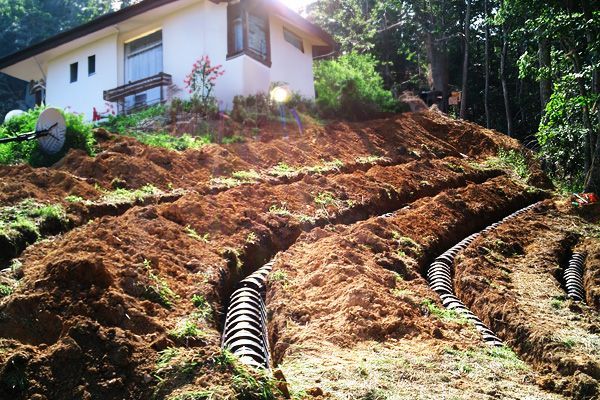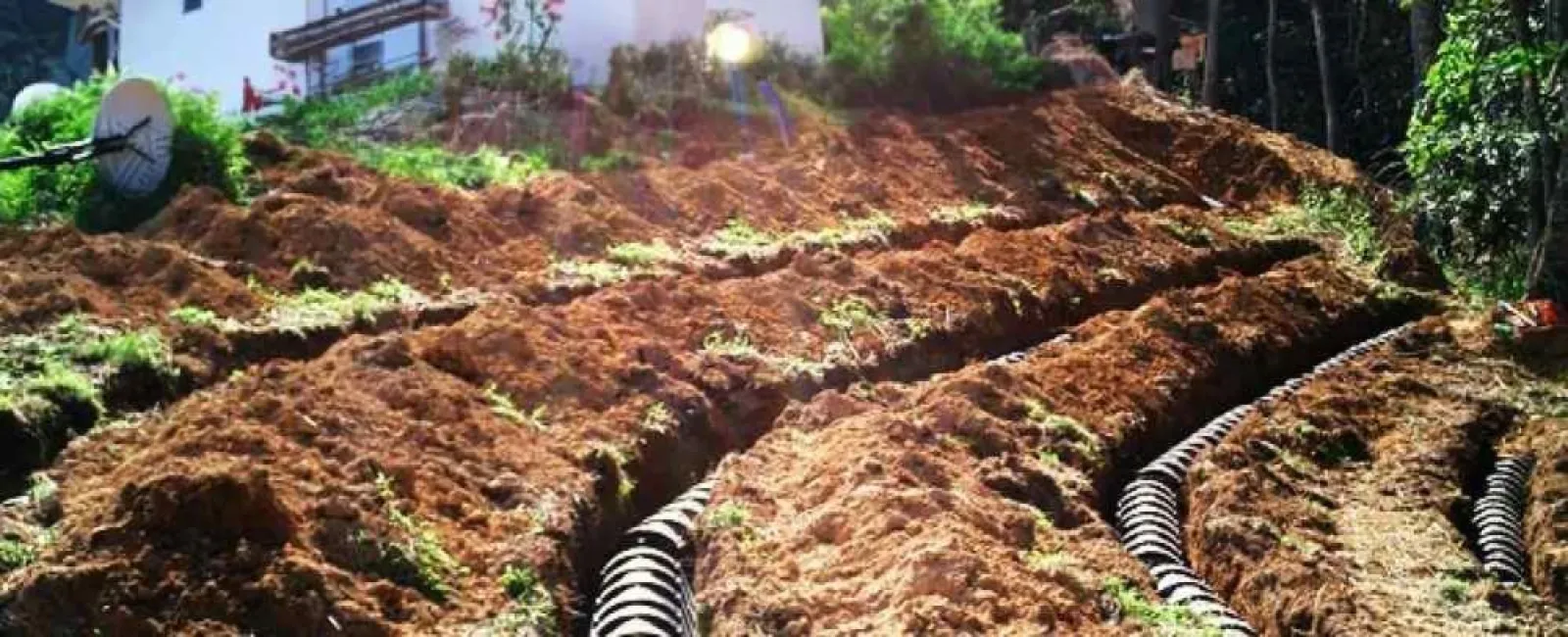If your home isn't connected to a municipal sewer line, understanding your septic system is crucial for your property's health and your family's safety. This guide is designed to walk you through the septic system basics, from its core components to essential maintenance. We'll cover everything you need to know, including septic tank drain field layouts and specific Georgia septic drain field requirements, to keep your system running smoothly for decades.

A septic system is your home's personal, on-site wastewater treatment plant. It's a self-contained, underground system common in rural and suburban areas. Its primary job is to treat and dispose of household wastewater (from toilets, showers, sinks, and laundry) in a safe and environmentally friendly way.
The process is simple yet effective:
Collection: All wastewater from your home flows into a buried, watertight container called the septic tank.
Separation: Inside the tank, solid waste (sludge) sinks to the bottom, while lighter materials like grease and oil (scum) float to the top. Natural bacteria begin to break down the organic solids.
Distribution: The relatively clear liquid in the middle, called effluent, flows out of the tank and into a network of perforated pipes known as the drain field (or leach field).
Filtration: This effluent slowly seeps out of the pipes and into the surrounding soil, which acts as a natural filter, removing harmful bacteria and pathogens before the water returns to the groundwater system.
The Core Components of Your Septic System
A deep part of understanding septic systems involves knowing its main parts:
The Septic Tank: Typically made of concrete, fiberglass, or plastic, this is where the initial separation and decomposition of waste occurs.
The Drain Field (or Leach Field): A series of underground trenches filled with gravel or other porous material containing the perforated pipes. This is where the majority of the wastewater treatment happens.
The Soil: The soil beneath the drain field is the final and most critical component for filtering and purifying the effluent.
Septic Tank Drain Field Layout & Georgia Requirements
The layout of your septic tank and drain field is not random; it's a carefully engineered design based on your property's specific conditions. Factors like soil type, land slope, property size, and local water tables determine the most effective layout. A proper design ensures the system can handle your home's wastewater volume and prevents contamination.
In Georgia, homeowners must adhere to strict Georgia septic drain field requirements. These regulations, enforced by local health departments, govern everything from system design and installation depth to the minimum distance the drain field must be from wells, streams, and property lines. Partnering with a certified professional who understands these local codes is essential for compliance and system longevity.
Essential Septic System Maintenance: The Do's and Don'ts
Proper maintenance is the key to avoiding costly repairs and premature system failure. Following these septic system basics will protect your investment:
DO:
Schedule Regular Pumping: Have your septic tank professionally pumped every 3-5 years, depending on your household size and usage.
Conserve Water: Reduce the load on your system by fixing leaks, installing high-efficiency fixtures, and spreading out laundry loads.
Protect Your Drain Field: Keep heavy vehicles, machinery, and structures off the drain field area to prevent soil compaction and pipe damage.
Manage Landscaping: Plant only grass over the drain field and keep deep-rooted trees and shrubs far away to prevent root intrusion.
Get Professional Inspections: An annual professional inspection can catch minor issues before they become major disasters.
DON'T:
Flush Non-Biodegradable Items: Avoid flushing anything other than human waste and toilet paper. Items like wipes, diapers, feminine hygiene products, and paper towels can cause severe clogs.
Pour Harsh Chemicals Down the Drain: Bleach, drain cleaners, and solvents can kill the beneficial bacteria that your system needs to break down waste.
Overuse Your Garbage Disposal: Excessive food waste, grease, and fats can overwhelm your tank and clog drain field lines.
Ignore Warning Signs: Don't wait if you notice foul odors, slow drains, or soggy spots near your drain field. Call a professional immediately.
Frequently Asked Questions About Septic Systems
How far down are septic tanks typically buried?
The top of a septic tank is usually buried between one and three feet below the ground surface. The depth can vary based on local climate (to stay below the frost line), soil type, and property grading. Proper installation ensures it's accessible for maintenance but protected from the elements.
What are the signs of a failing septic system?
Common warning signs include gurgling sounds from your plumbing, slow-draining sinks and toilets, foul odors indoors or outdoors, standing water or unusually green grass over the drain field, and sewage backing up into your home.
How can I protect my septic field lines?
Beyond keeping heavy objects off the area, direct all other water sources (like roof gutters and sump pumps) away from the drain field. An oversaturated field cannot properly absorb and treat wastewater.
Your Partner in Septic System Health
Proactive care is the most effective way to ensure your septic system functions reliably for years to come. By understanding septic systems and committing to regular maintenance, you protect your property's value and the local environment.
For expert advice, professional inspections, or emergency repairs in Georgia, trust the team at Scorpion Septic. Contact us today to schedule your service and gain the peace of mind that comes with a healthy septic system.

